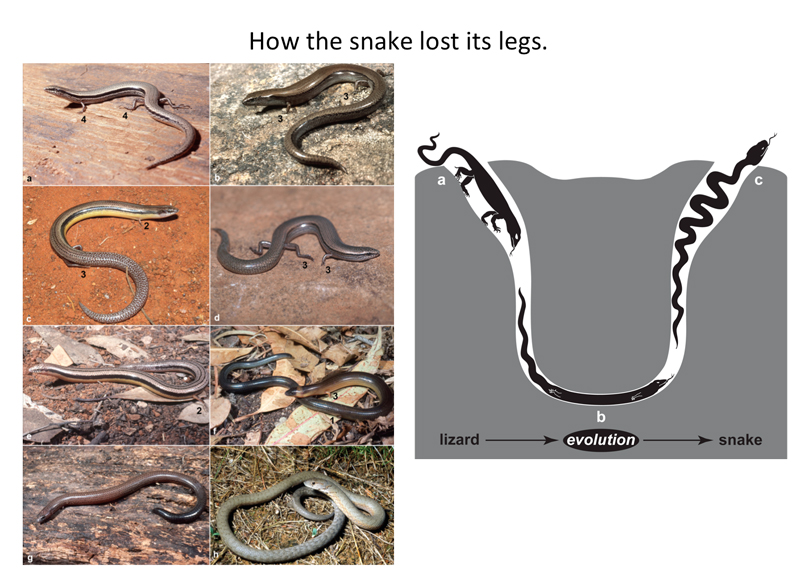| Although some of these reptiles look like snakes, they are lizards. Numbers next to legs in each panel (and in parentheses in this legend) are the number of digits per foreleg or hindleg respectively if present. (a) Lerista dorsalis (4+4). (b) Hemiergis decresiensis (3+3). (c) Lerista desertorum (2+3). (d) Lerista timida (3+3). (e) Lerista edwardsae (0+2). (f) Anomalopus verreauxii (3+1). (g) Ophioscincus truncatus (0+0). (h) Pygopus lepidopodus (0+0). Leg loss is common among lizards and may have occurred for the same reason as leg loss in snakes. Why did snakes lose their legs? As shown in the diagram at the right, it was because their lizard ancestors started living in tunnels. Protruding legs on a burrowing animal would be more than a nuisance. They could be a lethal liability. In a tight space, they might cause their bearer to become stuck and die. Hence, the rate at which snakes lost their legs may have been greater than expected from disuse alone. Under such conditions, natural selection would not only have failed to purge corrosive mutations from leg-making genes. It would also have favored any alleles that made the limbs smaller and smaller until there was virtually nothing left of them. We also know a lot about how legs were erased genetically, but the story (like the legs of the proto-snake progenitor) is too cumbersome to fit into this small space. All photographs were taken by Mark Hutchinson, South Australia Museum, Adelaide, and are used by permission. |
|
leopard | cheetah compared with butterfly | anglefish | zebra | mouse cloud leopard | giraffe | ant | beetle | treehopper stalk-eyed fly | ladybird | snake | The Interactive Fly resides on the web server of the Society for Developmental Biology. |


